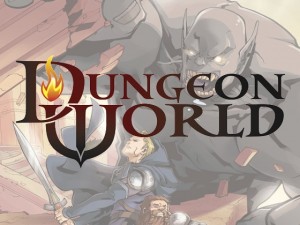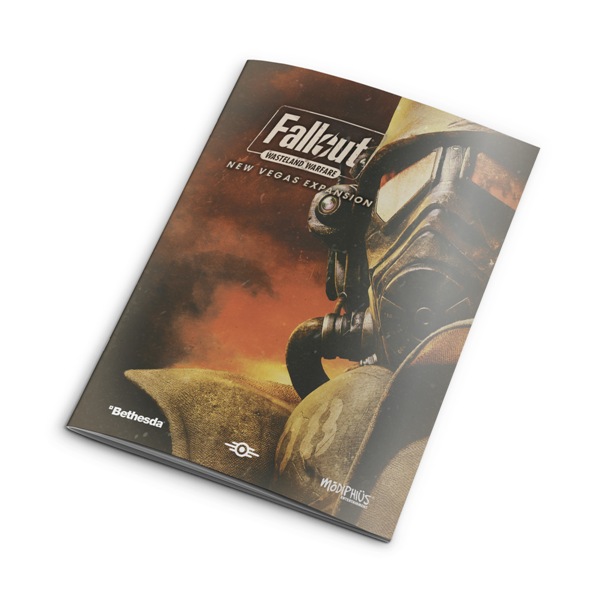The Canadian Principle
By The Warden
 I want to tell you a story about my nephew for a second. He’s a huge video gamer at eight years old and has already advanced up to some rather elaborate games (including some mature ones). While he’s quite good at catching onto the game’s demands and resources, there are still some things he struggles with due to inexperience.
I want to tell you a story about my nephew for a second. He’s a huge video gamer at eight years old and has already advanced up to some rather elaborate games (including some mature ones). While he’s quite good at catching onto the game’s demands and resources, there are still some things he struggles with due to inexperience.
When I went to visit my family during Easter weekend, he asked for my help with a new game. “I’ve been stuck on it for two weeks, but I can’t get to the first guy.” We head downstairs, he pops the game in, and sure enough he’s stuck on the wrong side of a fence. His character cannot jump or hurdle over it, nor can he kick the fence down or go back from whence he came to find another way inside. He was literally stuck… until I pointed out that maybe he can crawl under the fence. Sure enough, problem solved and he was able to move on with his game.
This is a prime example of why I’m not a video game fan. These kind of locked protocols have always infuriated me as lazy programming or storytelling, more so with 21st Century games because of the incredible level of detail available today. It’s been my go-to point for the power and strength of tabletop roleplaying games. If I was playing any RPG with my friends and we came across a fence, I could climb over the fence, kick it down, OR crawl under it. It may even be safe to say that the fence wouldn’t come up as an obstacle because it’s such a basic matter compared to the challenges ahead.
The funny thing is, I’m not so sure about that argument anymore. There have always been exceptions one could chalk up to individual GM styles. We’ve all played with different types of Gamemasters (they’re as numerous in type as players) and some of them have been rather strict in the flexibility in the game mechanics or the character’s options and possibilities. I’ve played in games where the impact of darkvision or low-light vision was downplayed due to the GM’s personal interpretation of light and the racial ability to ignore it. Ugh, or alignment interpretations. There’s a game killer when the group debates whether or not the paladin can accept the help of a wanted fugitive. There’s always room for disagreement and personal interpretation when it comes to character options, but there seems to be an in-grown tendency amongst players to maintain a video game expectation in their tabletop games.
Allow me to exampilate. During the latest round of playtests for one of my current projects, the heroes faced a foursome of heavily armoured warriors covered head-to-toe in forged steel. To cause damage with an ordinary attack, they had to roll a critical. For the first couple of rounds, they tried and tried and struggled just to drop one of them before they expressed frustration and doubt on the odds of their success.
“I don’t think we’re going to be able to beat these guys,” one of the players spoke up. “Their armour is too tough. My bullets are just bouncing off them.”
This was my reply. “Yep. So why are you still trying to shoot them?”
Everyone looked at each other, damn near smacking their foreheads for not thinking of it sooner. “You mean if we get up close, we could try and snap their necks?”
“Bingo.”
THE POWER OF CONCEPT
It’s not an accusation of “playing the game wrong,” or whether or not you’re comfortable standing inside the box, outside, or pressed right up against the edge. In many ways, players are working within what they believe to be the limits of the game’s design. Why? Courtesy. If a Gamemaster is akin to the host of a party, then the players are the guests with a standard expectation of etiquette in any gathering. If you walk in, take off your coat, and discover the stereo’s broken, you’re not going to throw a fit and storm out in a raging protest, are you? The same principle applies here. The polite thing to do is find another way to get music in the room or find another way to help liven up the party. What’s important is that we’re together to have a good time. I call it the Canadian Principle.
Games are provided as a concept, no matter how open-ended the system may be or the fact that you’re using an open system such as Savage Worlds. It doesn’t matter how you’re playing, it’s what you’re playing for and that’s where the concept dominates the players’ approach to your game. Dungeon World is about dungeon crawling, Spycraft is about intelligence gathering, and Werewolf is about life as a monster (all of which are overly simplified). The game’s mechanics are built to support that concept. Within that concept are expectations of action, physics, input, output, and challenge with the mechanics remaining under the surface. As much as it pains a fella like me to say it, mechanics rank third on the list of importance to the average player. For them, the mechanics are right up there with wondering about the temperature a bar keeps its beer; so long as they’re serving up cold ones, who cares when you’re drunk?
Every game suffers from the effects of the Canadian Principle and it has nothing to do with the game’s design or content. It all has to do with the players’ experience. If you started out playing tactical combat RPGs with precise rules and character options (i.e. your character cannot attack with two weapons because he does not have the ability to attack with two weapons), odds are you will work with whatever information is presented in front of you. If you entered the RPG realms with rules-lite or heavy optioned systems, you’re more inclined to try new things with the understanding that anything’s possible with just a penalty thrown into the roll somewhere (or you can overcome it with an optional component, such as a skill or trait). In other words, anyone can use two weapons at once, but with great penalties until you purchase the proper feat. Yet despite this approach, both types of players will always work within the game’s concept, even if their approach to interacting with that concept differs.
If you tell players they’re about to embark on a mission to infiltrate the bowels of Al Qaeda’s network of caves as a member of Seal Team 6, no one’s going to seriously want to strap on coloured tights and look up the rules on human flight. They will understand it is a modern warfare simulation campaign grounded strictly on reality, requiring teamwork and deadly precision in harsh conditions. It will be violent and fast-paced without room for error. No one’s supposed to have the innate ability to fly. If the Gamemaster suddenly whips out a tiny addendum to that description, such as “You are part of an elite cybernetic military operative initiative…” then you will see a dramatic shift in character design and approach.
There’s really nothing wrong with the Canadian Principle (which is, ironically enough, a very Canadian thing to say) because it’s far better to have players courteously work their way into the game rather than barge right in and decide they want to fly. Unless you are running a game with enough popularity as to expect every player at the table to have a copy of the rulebook (and read it), their understanding of the game’s concept and how those mechanics come into play is learned from the Gamemaster. When they listen to the GM describe how the evil wizard summons a fireball shaped like a charging lion, it won’t be long before a heroic spellcaster manipulates their magic as well.
THE DUNGEON WORLD EXCEPTION
Must it always fall on the shoulders of the GM? Not necessarily, though it’s safe to say such responsibility will always fall on the GM’s shoulders; all that varies is the weight. After recently reading Dungeon World, I’ve begun to wonder how much impact the mechanics can have on a player’s evaluation of the mechanics influencing the concept.
In Dungeon World, all characters use moves to perform their actions and every move is written in a uniquely lyric and open fashion for all players (GM included) to have a conversation. Dice rolls and their difficulty are the same, regardless of the move or the intention behind it. If you roll a result of 6 or lower, the move fails. If you roll between 7-9, it’s only partially successful with a consequence provided by the GM. If you roll a 10 or higher, it’s a perfect success and the move goes off exactly as planned. There are more specifics within individual moves, but even those are generic enough to allow artistic interpretations. (There’s an excellent PDF download detailing how moves work in the game if you’re not one of the thousands who have already grabbed their copy.)
The sheer fact that the mechanics are built around the concept of having a conversation, to me, leads players to the realization that this game will be interpretive and available to your imagination, but there’s only so far even these mechanics can open those doors. So let’s assume it does nothing to further the cause. Is there another way to overcome this hurdle when you’re trying to introduce a new and different game to your group?
There’s always the good old tried and true. Just because you can’t mechanically swing two swords at the same time, doesn’t mean you can’t describe it that way. You just can’t receive any benefit for doing so, but your description of dual-wielding awesomeness is not prohibited in any rules I’ve ever seen. If there is a game written under such strict guidelines, it’s not welcome on my shelves.
Roleplaying games are my game of choice because I’m not limited in my mind. Sure, the dice and the GM smirking on the other end of the table may tell me I swung at the dragonman and missed, but my imagination provides me with the image of my character, smeared in the black ichor of previous victories, spiraling clockwise with his blade clenched in both hands as the startled and scaled opponent cowers before tumbling backwards and narrowly escaping my slice. I don’t know about you, but I like my imagination’s version better.



